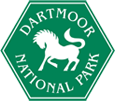Sittaford Stone Circle
Until 2008 22 possible and reported stone circles were known within the National Park. Since their construction from around the 3rd millennium BC, these monuments have been subjected to destruction, disturbance and change by people and their livestock. This often makes understanding their original use very difficult.
The Discovery
In 2008, following a moorland fire, an amateur archaeologist noticed several large stones, half concealed in the peat 380 m south-west of Sittaford Tor on northern Dartmoor. Investigating further, he discovered a circle of thirty large granites slabs all of which were lying flat on the ground. This was a previously unknown stone circle which had been covered by growing peat following its abandonment meaning it had remained undisturbed, unlike other monuments of its type. The site is a potential treasure trove of information concerning the origins, meanings, use and abandonment of stone circles, not only on Dartmoor, but Nationally as well.
Excavation
In 2016, as part of the National Lottery Heritage Funded Moor Than Meets the Eye Landscape Partnership Scheme, and following geophysical survey of the site in 2015, DNPA undertook a targeted evaluation excavation with a small team of volunteers and AC Archaeology, a professional archaeological unit. The basic aims of this work were to improve our understanding of the development and date of the stone circle and its surrounding environment.
What we found
The investigation answered some of the questions posed, but raised others. For example, the subsoil underlying the peat on the site was identified as a possible glacial till, possibly supporting the idea that parts of Dartmoor were covered by a thin ice sheet during the last Ice Age.
Evidence suggests the stone themselves were originally placed upright although this was not conclusively proven and a lack of socket holes makes the method by which this was achieved difficult to know. However, dating the peat beneath several of the fallen stones did indicate that the monument had fallen out of use by c. 2,000 BC as two stones were lying flat by this date. The date of construction of the stone circle also remains unknown although it is likely to fall somewhere in the middle of the 3rd millennium BC.
Finally, the peat itself was too late in date to shed light directly on the environment at the time of the circle’s construction, but pollen contained in peat from Winney’s Down 700m to the west suggested a largely wooded landscape with patches of heathland. The Sittaford peat samples indicated that, by around 1500 BC (the Middle Bronze Age), the landscape was much more open with pollen and fungal spores suggesting an increase in grazing from around 1,100 BC (the Late Bronze Age) which lasted into the medieval period.
If you would like more information on this project the following reports are available from the Historic Environment Records:
1: Farnell, A. 2016; Sittaford Stone Circle, Dartmoor Forest, Dartmoor, Devon. Unpublished report for Dartmoor National Park Authority.
2: Fyfe, R. and Ombashi, H. 2018; The environmental context of the Sittaford stone circle: post excavation report, 2018. Unpublished report for Dartmoor National Park Authority.
